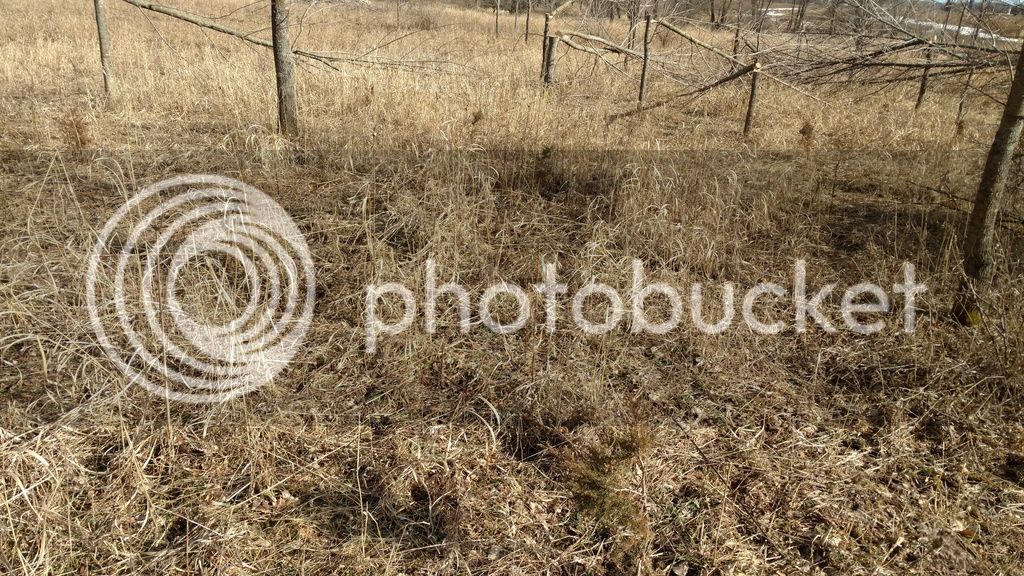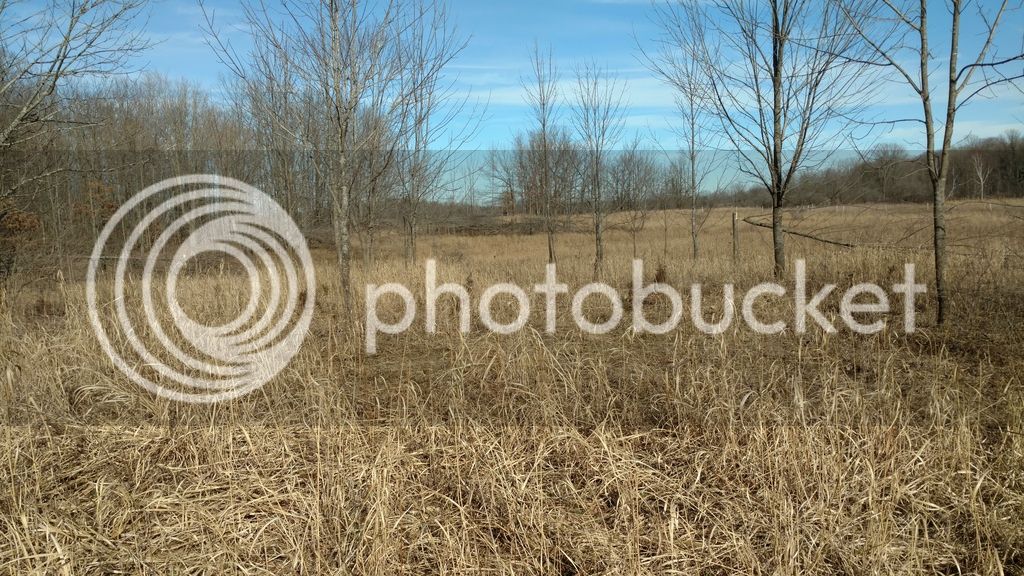Thanks for the input everyone. I continue to plan and research.
Unfortunately burning is out of the question for me (it's possible, just not for me). The field I want to plant into is surrounded by 1000's of acres of timber. If it ever got away from me, someone else would own my farm

John ... I did my first switch grass seeding this spring, just got done planting 22 acres. Spent the last year researching and compiled some notes. Paul Knox shared a lot on different sites known as Lickcreek and some of that info is from him. Below is a summary of the info I gathered ...
Switchgrass - Establishment and management
Switchgrass:
Switchgrass is perhaps the ultimate winter wildlife cover. Nearly all types of Iowa wildlife from deer to quail will use its dense, upright cover for protection from weather and predators. Switchgrass is a warm season grass (growth is during the hot summer months), grows from 4-6 ft. high and will remain upright through out the winter. Heavy snows will cause it to bend, but a warm sunny day will find it shrugging off the snow and standing upright again. Since it grows in clumps, rather then a dense sod, it leaves travel ways for small game such as pheasants and quail. Switchgrass is drought resistant, provides excellent erosion control and will grow on most types of soils, including lowlands.
In states such as Iowa, where switchgrass is more common, several Boone & Crockett bucks have been taken from small stands of switchgrass, where they had eluded hunters for years by hiding in the dense cover. Switchgrass can be somewhat slow and difficult to establish, but once this is accomplished, it will remain a viable stand for 20 or more years. Initial costs tend to be high, but spread over a lifetime is really quite small.
Switchgrass will grow on most soils from sand to heavy clay but thrives on rich moist soils and can handle some brief flooding along waterways.
Upland varieties:
Cave In Rock (CIR) is one of the tallest, rankest, most winter hardy and longest lived. Cave In Rock is one of the most sought after switchgrass varieties because it is such a tall and dominate species but it is also one of the most dormant seeds. Dormancy however is not an issue when seed is broadcast or drilled onto frozen soils in February or March. Shawnee and CIR are the two top varieties in Iowa tested for bio-fuels production
Others - Trailblazer is a good tall variety, Nebraska 28 & Blackwell a shorter variety better suited for upland bird habitat (Blackwell is one of the least dormant along with NE28 and are better suited for spring drilling but they are more susceptible to rust and disease then Cave In Rock and therefor may not be as long lived), Caddo, Pathfinder, Forsetburg Upper plains states, Dakotah
Lowland varieties:
Alamo
Kanlow
Cave-in-rock, Blackwell, Pathfinder, Forestburg, and Trailblazer are varieties well adapted to the mid-west. If possible planting an eco-type from your area will help ensure a longer lived healthy stand. Switchgrass is best managed as a pure stand where the chief use will be to provide winter cover near cropland or food plots. Adjacent stands of Native Warm Season Grass mixes and alfalfa or clover will provide a well-diversified source of nesting and brood rearing habitat for upland game birds and other wildlife.
Switchgrass provides year around cover for whitetails and is a great benefit in helping to slow or prevent poachers. It is very difficult to spot deer in a thick stand of switchgrass and deer of all ages will use it as a secure bedding area.
Switchgrass Establishment:
Switchgrass and other warm-season grasses require a soil temperature of above 50 degrees F for satisfactory germination. Recommended seeding rate is 4 to 5 pure live seed (PLS) up to 8-10 lb/acre. The planting site should be free of perennial or noxious weeds. A moist, firm seedbed is essential. Firming the soil with a roller packer before seeding helps ensure that the seed is placed at the recommended seeding depth of ¼ to ½ inch. Broadcast packer-seeders or drills equipped with disk openers and depth bands provide the best results. Companion crops are not recommended.
Switchgrass seed is often dormant and may not germinate unless stratified (exposed to a period of wet chill). It is best seeded in late winter (February or March) although very late fall/early winter will also work well. This allows the seed to stratify as it would in natural prairie conditions. Broadcasting or no tilling on bean ground works best, since there is little ground cover. No-tilling works better in sod or heavy residue, but either method must be done on bare ground (no snow cover.) Switch can also be broadcast over freshly planted corn where Atrazine is used for weed control.
The seed is small, hard seed that is running as water, and easily sown with most any type of seeding equipment from a $20 hand broadcast seeder to a $12,000 no-till drill. In all cases, no tillage is preferred, however the less residue the better. Close mowing/shredding or burning and herbicide, the summer and fall previous will accomplish this.
Preparation for seeding, should be started the summer/fall before seeding. A soil test can determine if lime or fertilizer are needed, however application of nitrogen should be delayed until the 2nd year. Nitrogen tends to encourage competitive cool season grass and weed growth., however mature switchgrass stands will flourish if Urea 46% is applied in early to mid June.
1) Begin by mowing (assuming the area is currently in sod), in mid to late July. Letting someone take hay off the area, is even better. This will remove all vegetation and litter to allow for better seed contact. If it is in crops, such as corn, mow, shred or burn the stalks, but do not disc or till.
2) In late August/early September, spray 1 ½ to 2 quarts of Roundup per acre, on the new re-growth adding 1 quart of crop oil and 2 ounces of Oust XP will ensure a better kill. On larger acreage’s you may be able to hire the spraying done by your local ag-chemical/fertilizer dealer (grain elevator), or a neighboring farmer. On smaller plots, an ATV mounted sprayer, or even a backpack sprayer will work
This process will kill and remove all vegetation, to prepare for seeding. The dead root system, left by the killed sod, will hold the soil and prevent erosion, until the new seedlings take root. This is one of the most important steps, if your new seeding is to be planted on sod.
3) Frost seed anytime from late November to late March, with February and March, being the optimum seeding time. Seed at 5-6# per acre, if using a drill, slightly more if broadcasting.
A) Small plots can be seeded by hand using a small handheld broadcast seeder, such as can be purchased at your local yard & garden center. ATV or tractor mounted
seeders also will work fine. Strive for 50 seeds per sq. ft. or 3.5 seeds per sq. inch. Check by spacing 3” paper cups across the path of your broadcast spreader, after
broadcasting seed across the path of the cups, you should have 2 ½ seeds per cup, more or less will require adjusting the gate on your seeder accordingly.
This rate will apply 2,000,000 seeds per acre. (389,000 seeds per #)
B) Larger fields can be planted using a no-till drill designed for planting Native Grasses. These are available through the your County Conservation Board & Pheasants Forever but require advance notice to reserve one, (contact your habitat chairman) however planting in the wintertime will mean less competition for the drill. Most drills will have two separate seeders - one for small hard seed like switchgrass, clover, alfalfa, etc. and a second hopper for fluffy seeds like Big Bluestem and Indiangrass.
Check the seeding rate by running the drill a few feet on a hard driveway and counting the seeds per inch. It is best to plant when the ground is slightly frozen (morning), rather then muddy or wet. The drill should barely cover the seed, with 30-50% being left uncovered. The freezing/thawing action will cover the seed and the wet/chill of late winter will stratify the seed, in the same manner as occurs on a natural prairie.
C) Another option is to plow, till & cultipack in early spring and broadcast or drill seed in using more conventional methods, however you may encounter a host of problems using this method. 1st since switchgrass seed is dormant, most of it may not sprout until the following spring, 2nd - tilling the soil will encourage a flush of weeds and grasses, not encountered with no-till methods. Use of herbicides and a great deal of patience will be in order using this method. If you do till/plant, a firm seedbed is a must, and care must be taken not to plant seed to deep. Pack, broadcast, and re-pack to lightly cover.
4) Weed control - Where possible, apply 2 to 4 quarts of Atrazine or Princep (simazine), early in the spring before weeds emerge. Apply the lower rate on lighter sandy soils, and the heavier rate on heavy clay type soils. Atrazine is a Restricted Use Pesticide and can only be applied by Certified operator (local ag-chem. dealer or licensed farmer) Princep is not classified as a RUP at this time and can be sprayed on with an ATV or backpack sprayer at 2 - 4 quarts per acre (less on lighter ground). Broadleaf weeds can be controlled later in the growing season with 2,4-D, however the switchgrass seedlings must have at least 4 leaves before spraying. Apply 2,4-D at a rate of 1 pint per acre.




